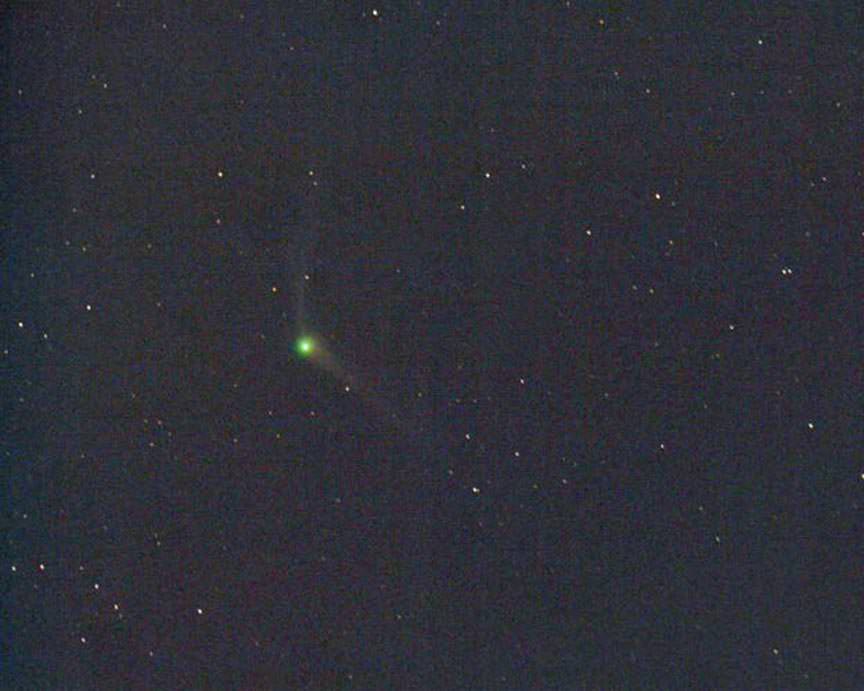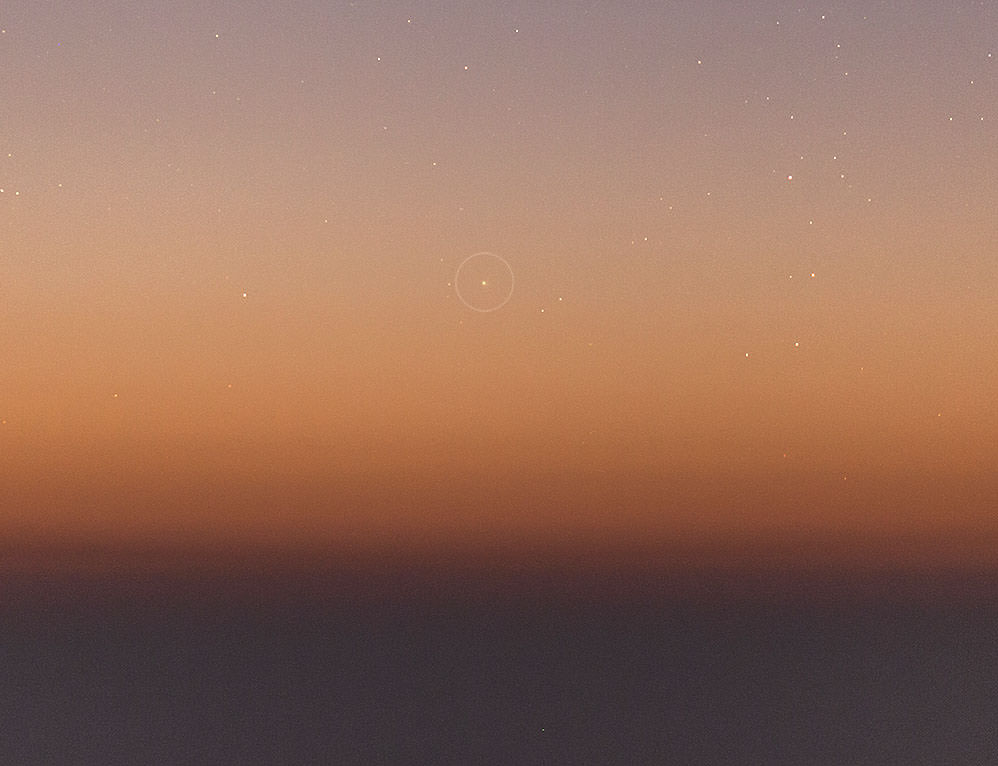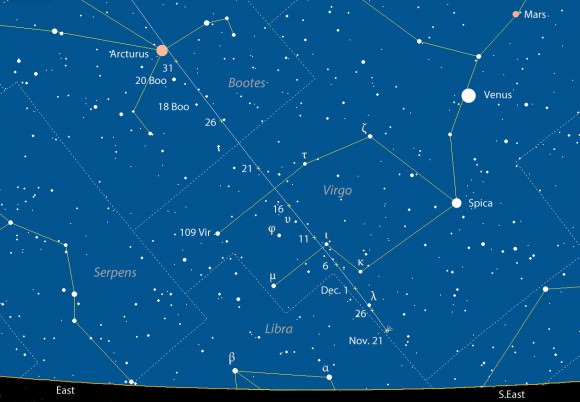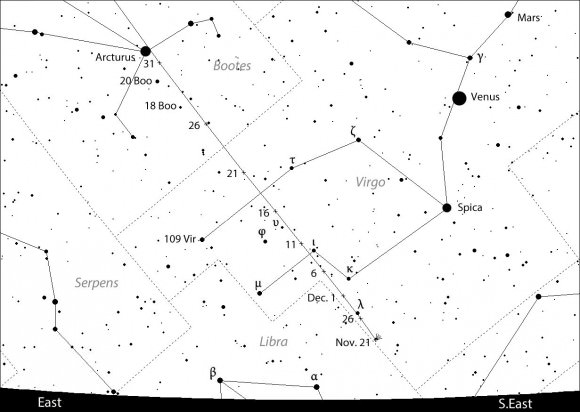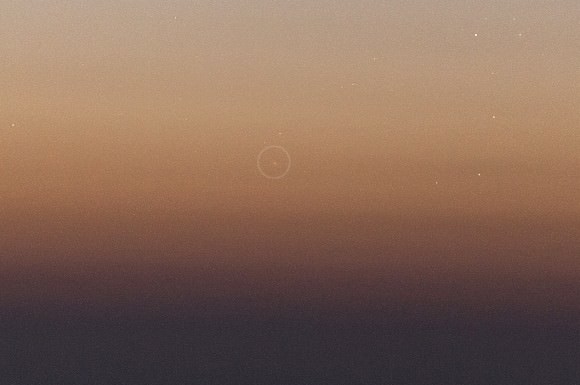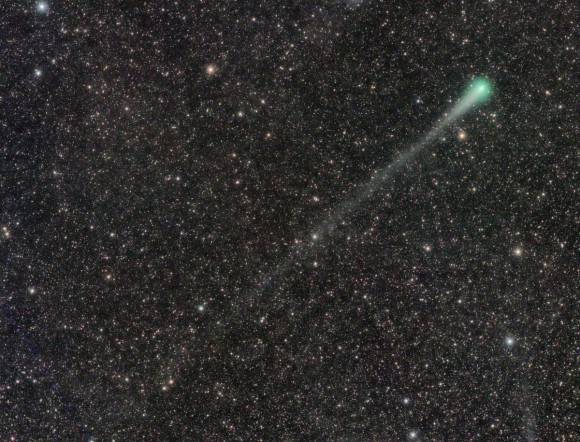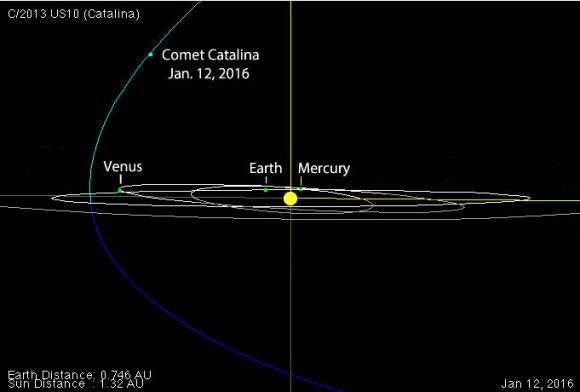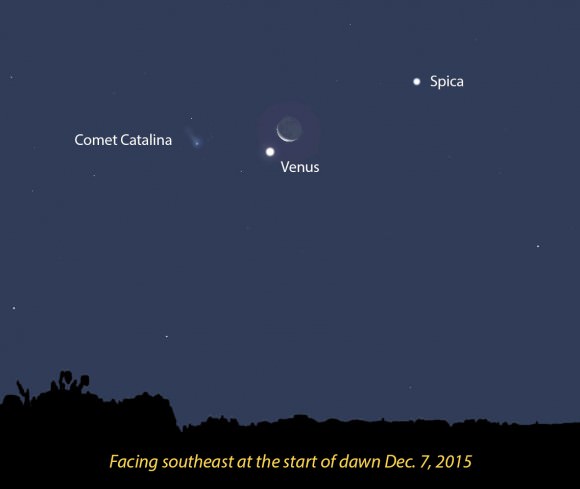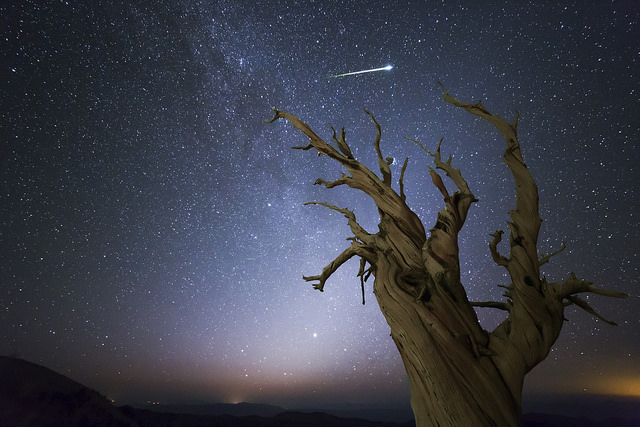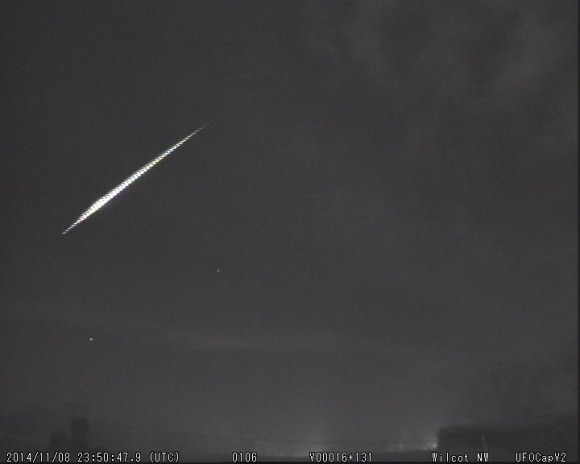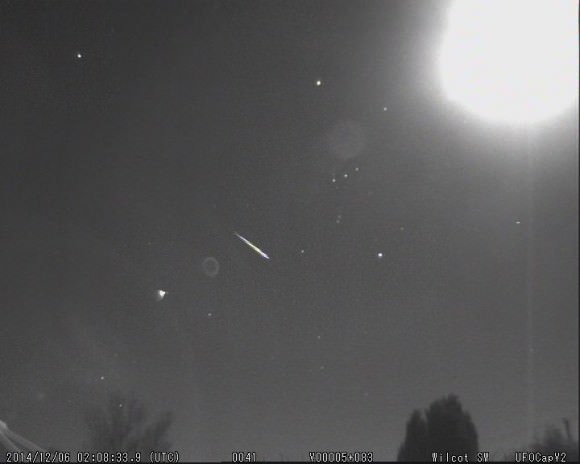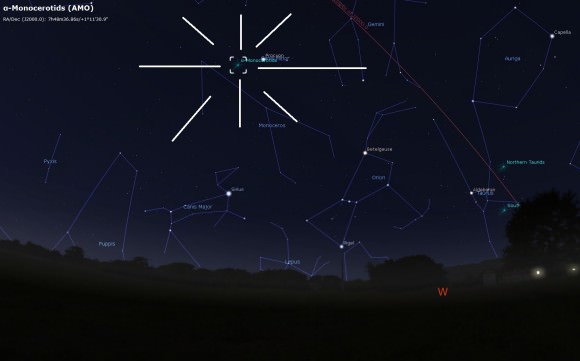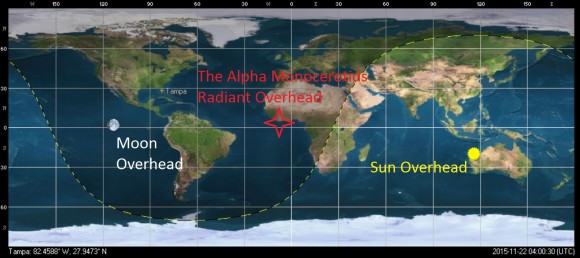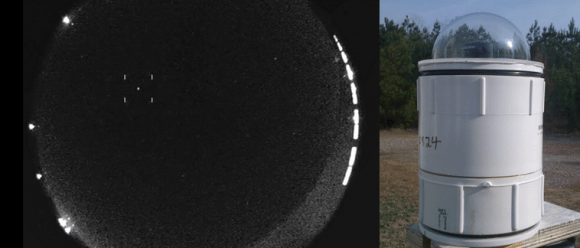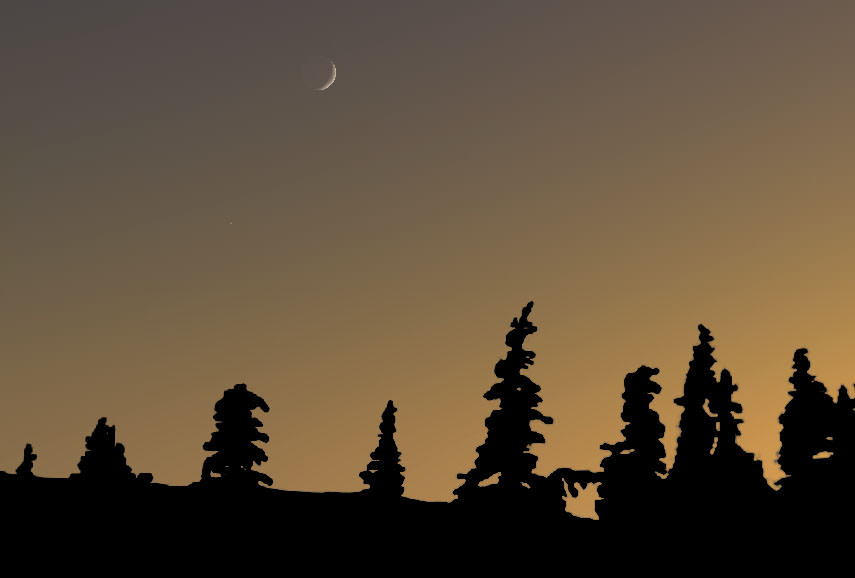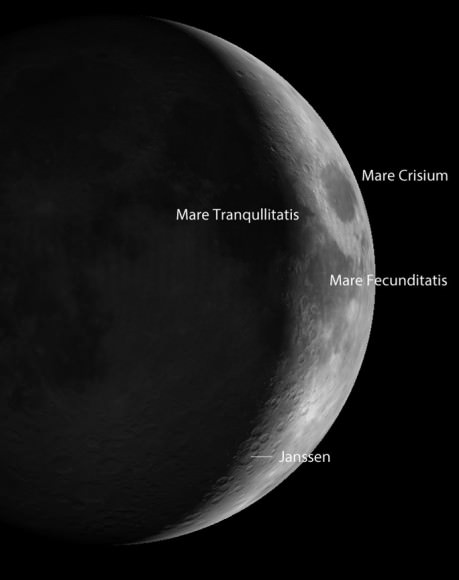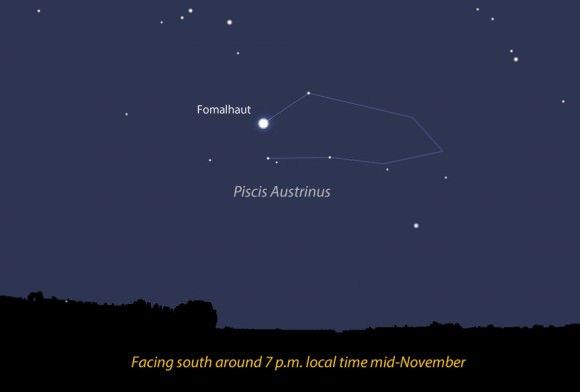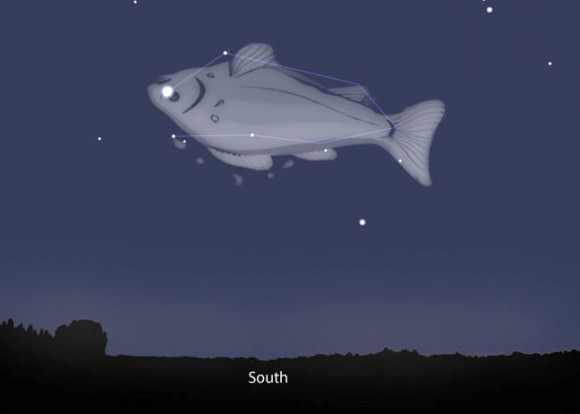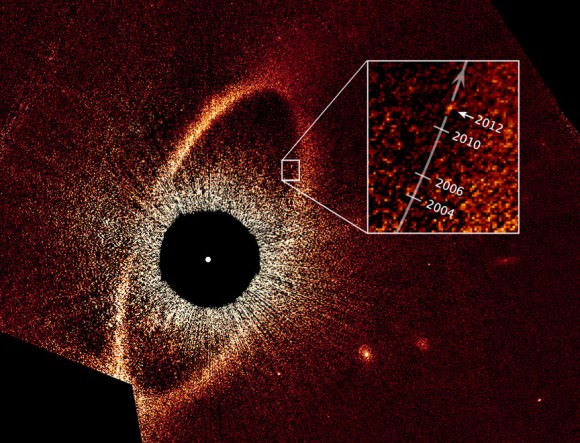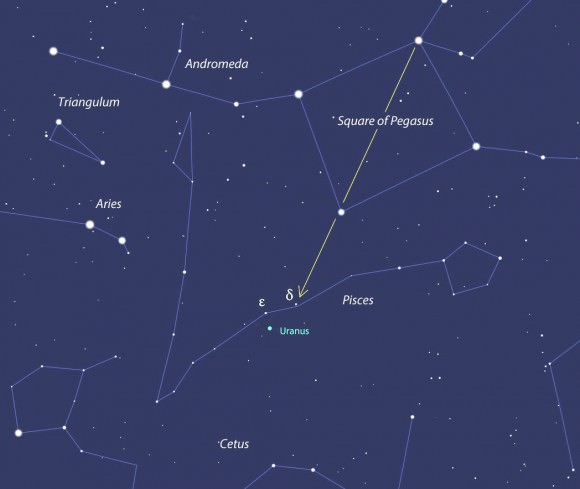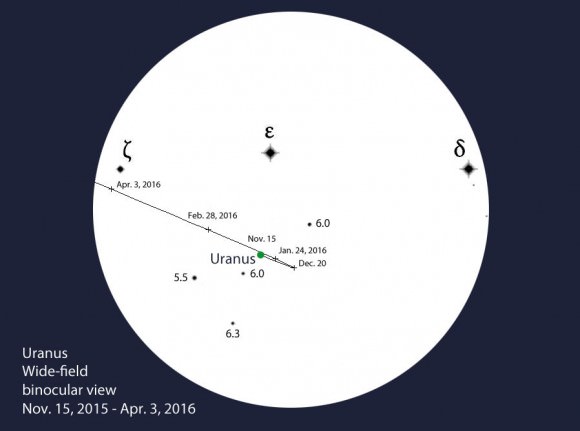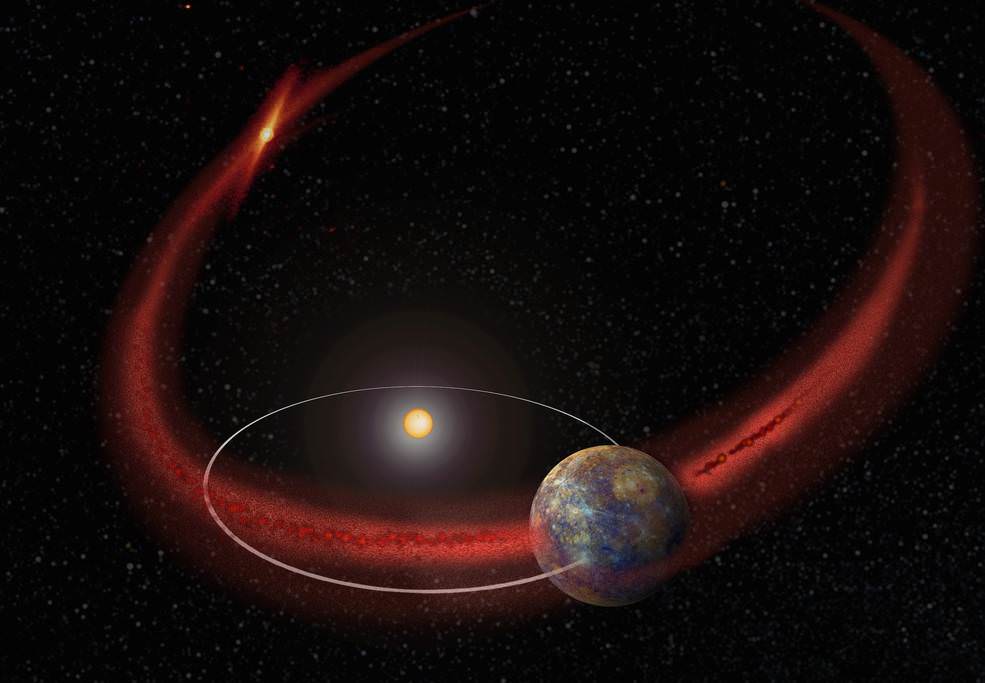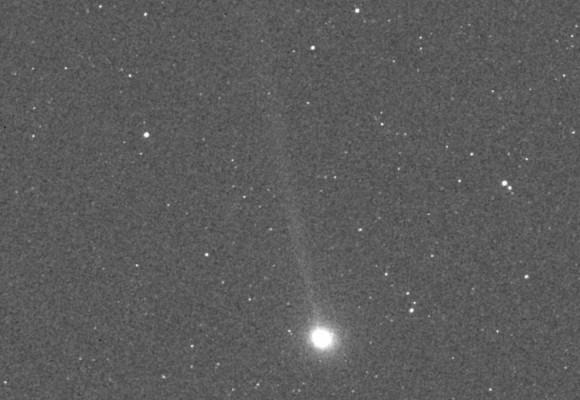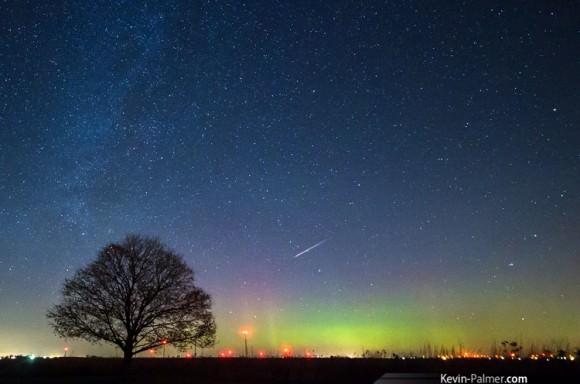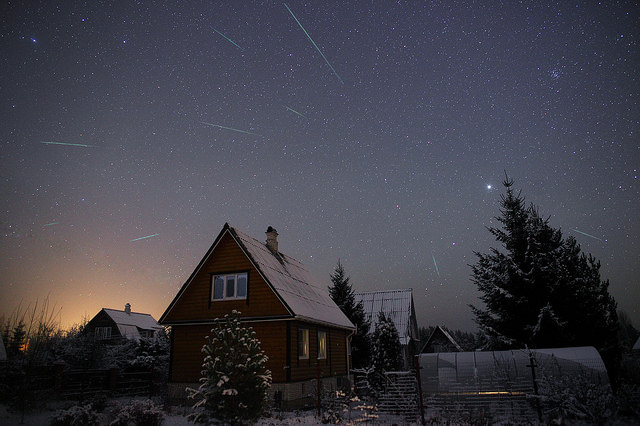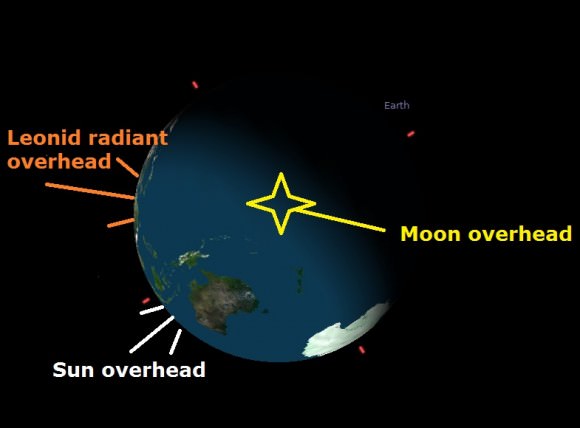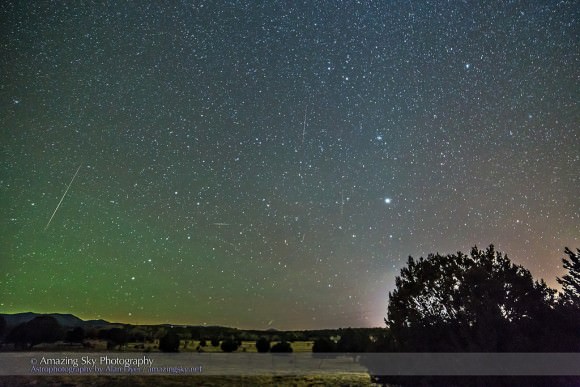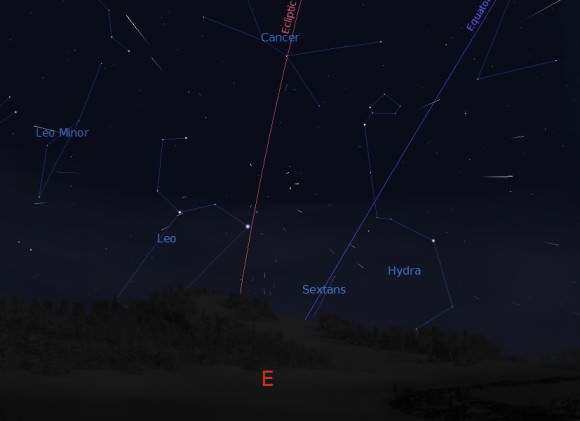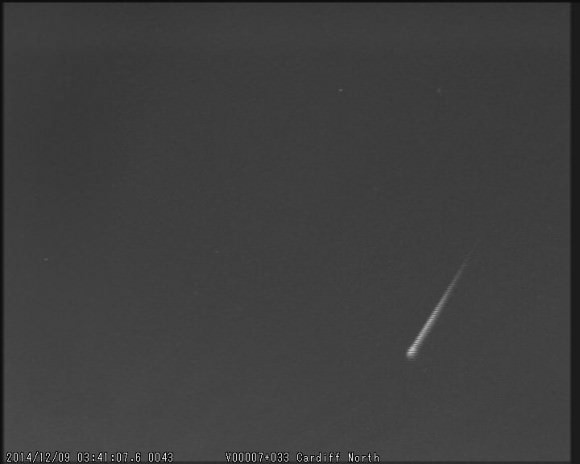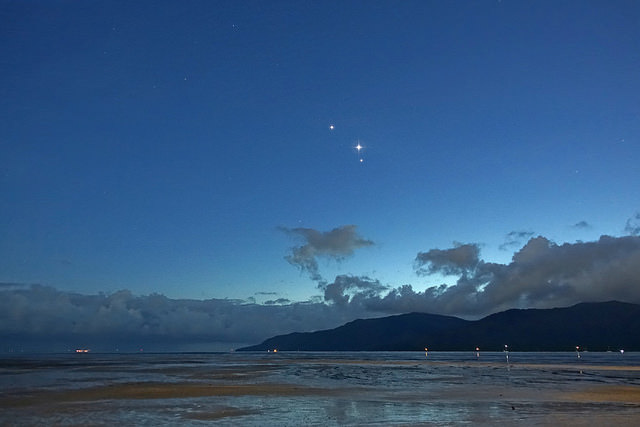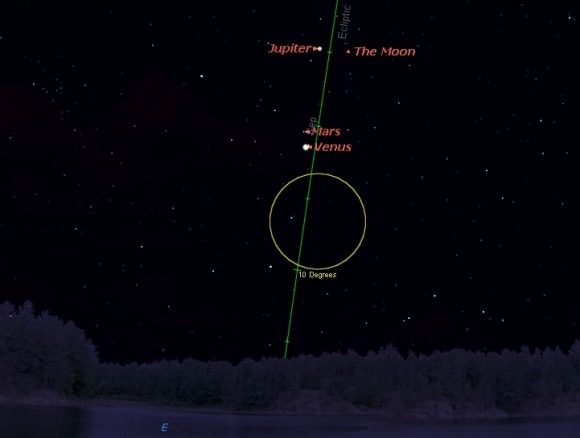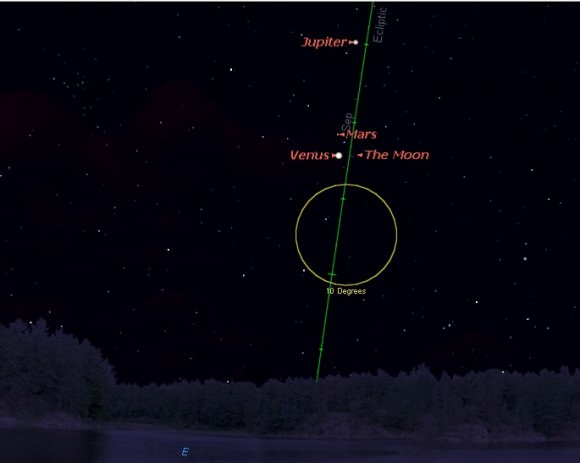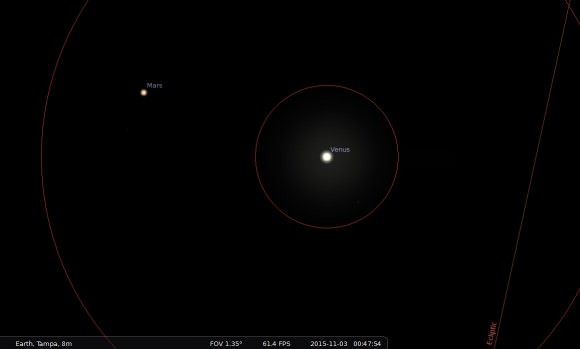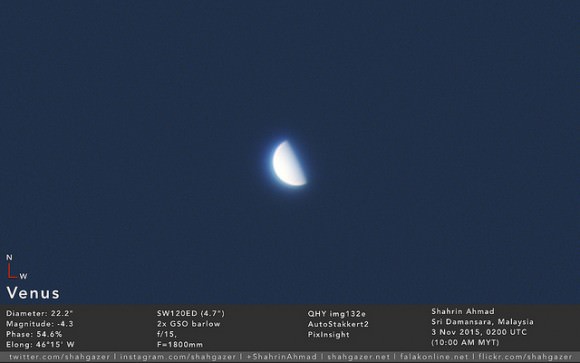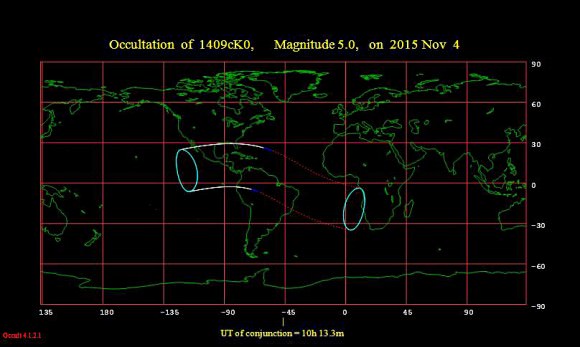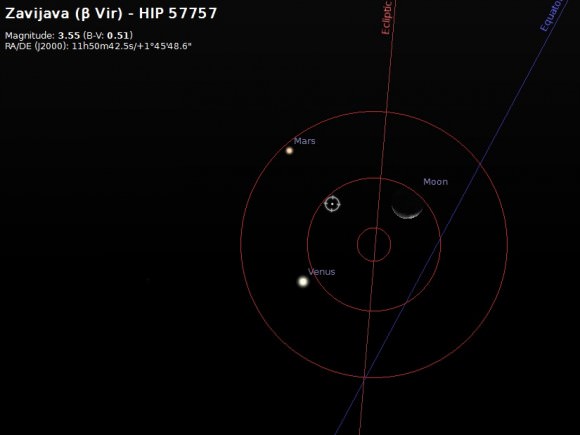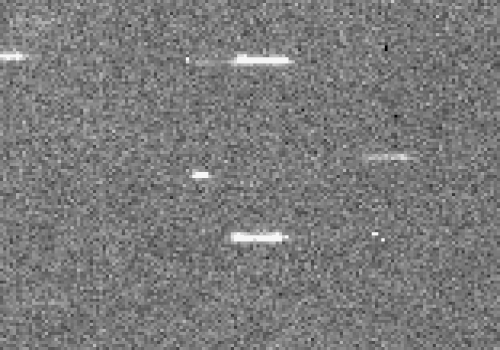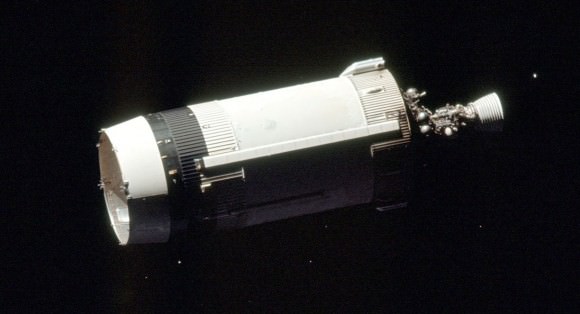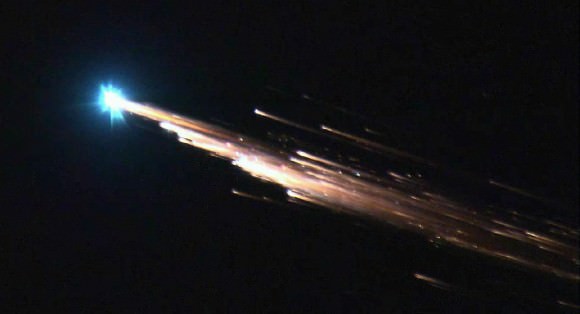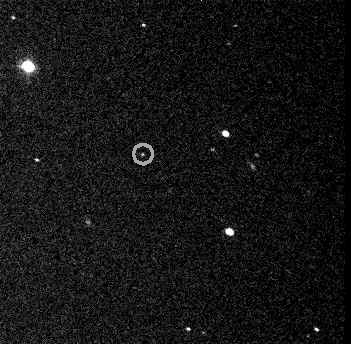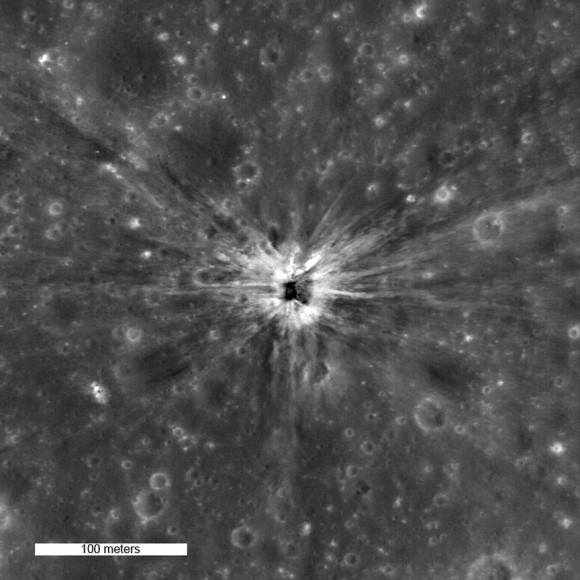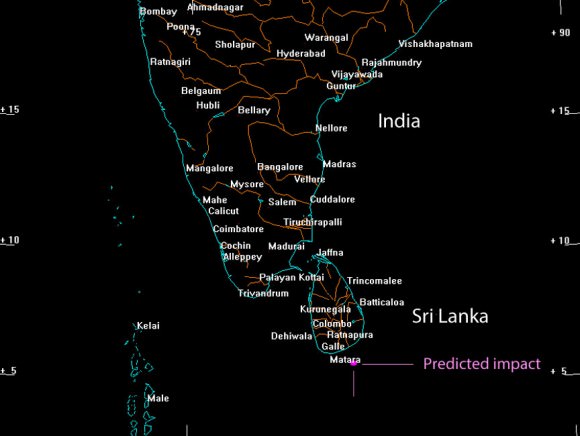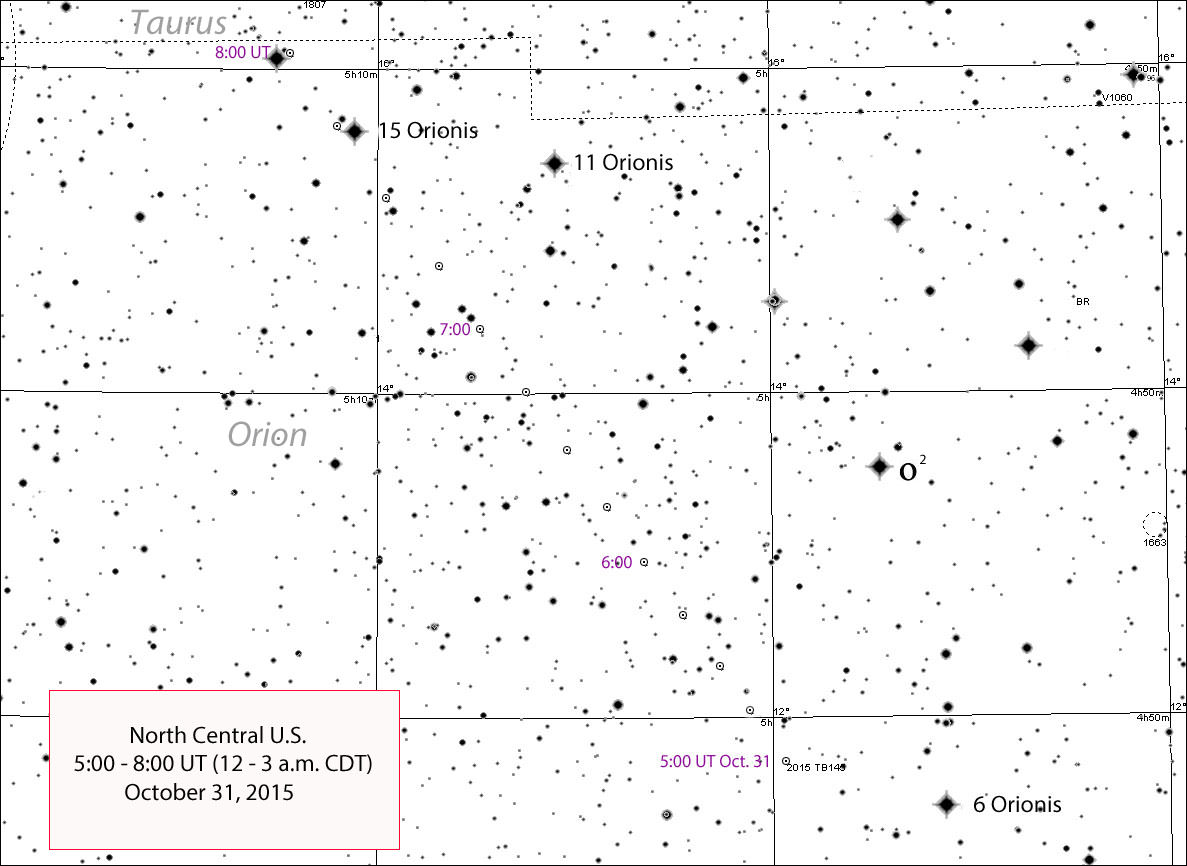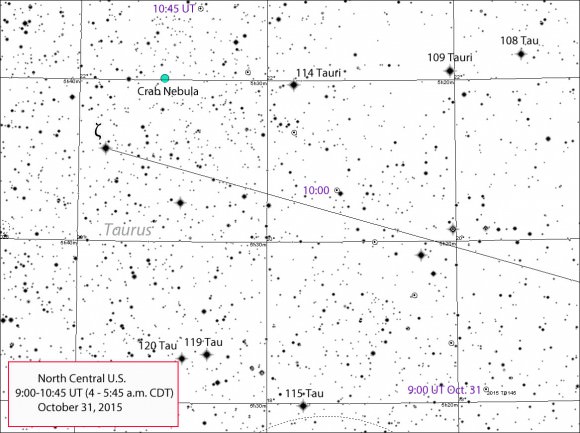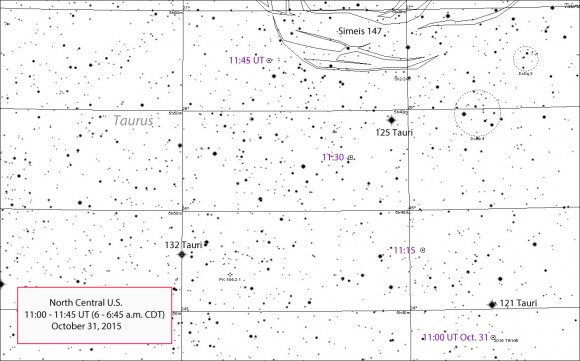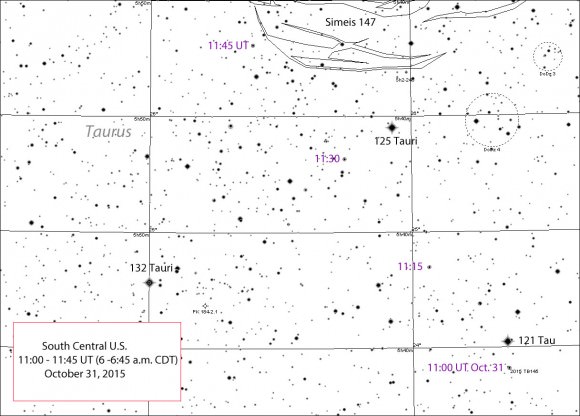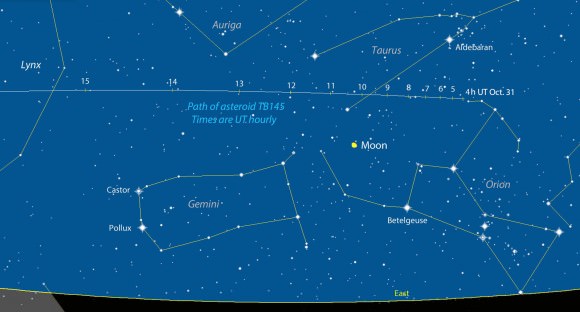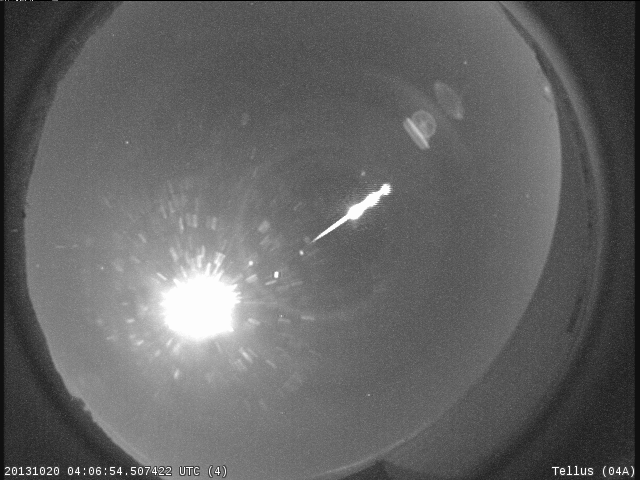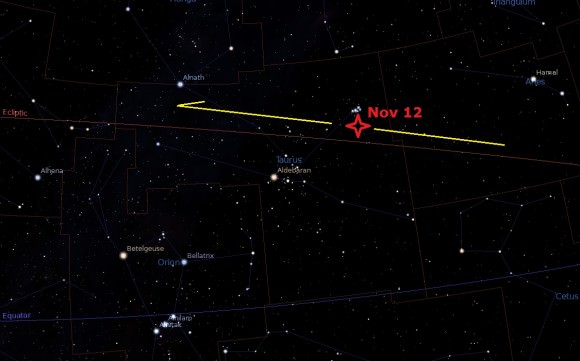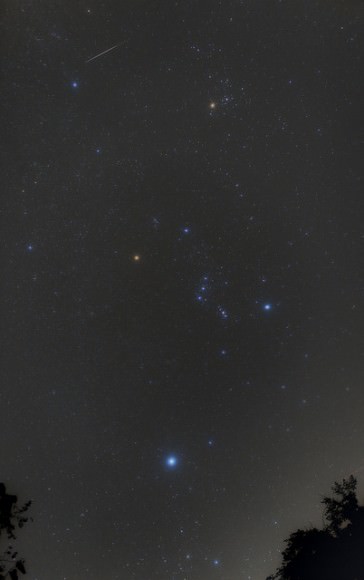Amateur astronomer Chris Schur of Arizona had only five minutes to observe and photograph Comet Catalina this morning before twilight got the better of the night. In that brief time, he secured two beautiful images and made a quick observation through his 80mm refractor. He writes:
“Very difficult observation on this one. (I observed) it visually with the 35mm Panoptic ocular. It was a round, slightly condensed object with no sign of the twin tails that show up in the images. After five minutes, we lost it visually as it was 2° degrees up in bright twilight. Images show it for a longer time and a beautiful emerald green head with two tails forming a Y shaped fan.”
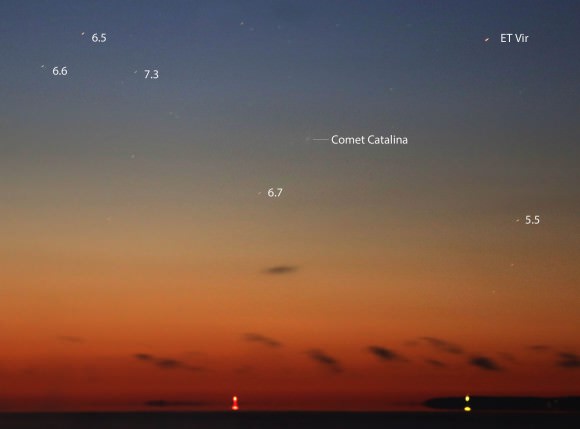
Schur estimated the comet’s brightness at around magnitude +6. What appears to be the dust tail extends to the lower right (southeast) with a narrower ion tail pointing north. With its twin tails, I’m reminded of a soaring eagle or perhaps a turkey vulture rocking back and forth on its wings. While they scavenge for food, Catalina soaks up sunlight.
I also headed out before dawn for a look. After a failed attempt to spot the new visitor on Saturday, I headed down to the Lake Superior shoreline at 5:30 a.m. today and waited until the comet rose above the murk. Using 7×50 binoculars in a similar narrow observing window, I could barely detect it as a small, fuzzy spot 2.5° south of 4th magnitude Lambda Virginis at 5:50 a.m. 10 minutes after the start of astronomical twilight. The camera did better!
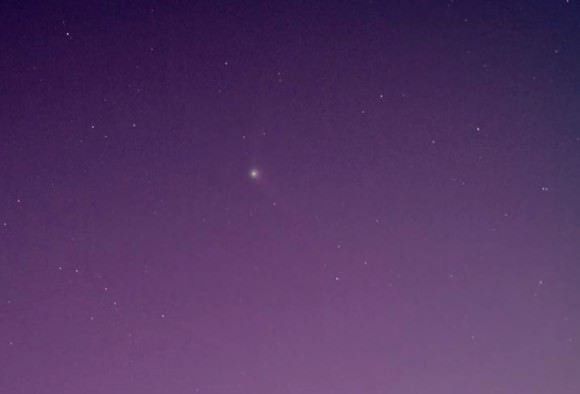
With the comet climbing about 1° per day, seeing conditions and viewing time will continue to improve. The key to seeing it is finding a location with an unobstructed view to the southeast — that’s why I chose the lake — and getting out while it’s still dark to allow time to identify the star field and be ready when the comet rises to greet your gaze.
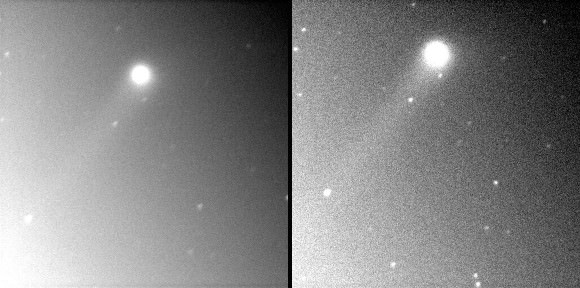
Alan Hale, discoverer of Comet Hale-Bopp, also tracked down Catalina this morning with an 8-inch (20-cm) reflector at 47x. He reported its magnitude at ~+6.1 with a 2-arc-minute, well-condensed coma and a faint wisp of tail to the southeast. In an e-mail this morning, Hale commented on the apparent odd angle of the dust tail:
“Since the comet is on the far side of the sun as seen from Earth, with the typical dust tail lagging behind, that would seem to create the somewhat strange direction. It (the tail) almost seems to be directed toward the Sun, but it’s a perspective effect.”
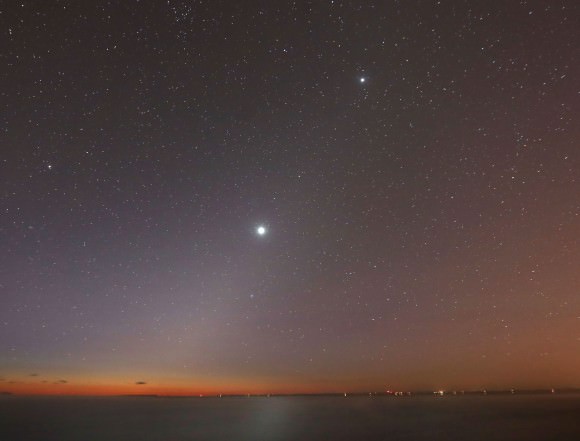
There were side benefits to getting up early today. Three bright planets lit up Leo’s tail and Virgo’s “Cup” and a magnificent display of zodiacal light rose from the lake to encompass not only the comet but all the planets as well.

